The Viennese know a good thing when they see it. Find out where to stay, eat and shop in this ever-evolving city that is a perfect harmony of old and new.
09 October, 2019
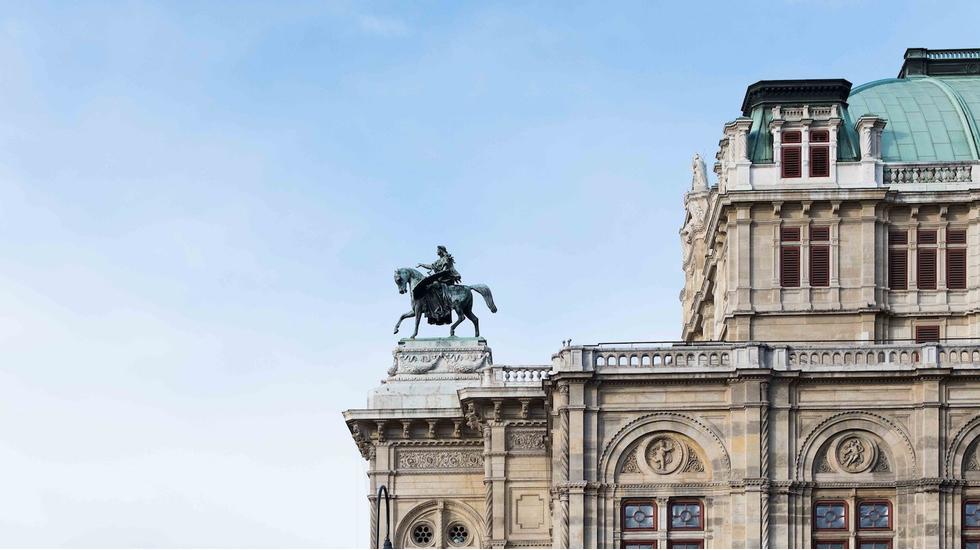
It
is Saturday evening at Musikverein, a coral-tinted concert
hall in Vienna’s first district. The sweeping main room, famed for
its perfect acoustics, is dipped in gold – with everything from the
intricately carved wall panels to the columns depicting ancient
female figures gilded and glowing. Two statues recline above the
grand organ pipes, clutching lyres and looking down at the
orchestra, where the musicians sit in perfect formation, separated
from the audience by a line of velvety red roses.
A round of applause follows a gentle cello solo before the
conductor welcomes the evening’s star. Valentina Naforniță is one
of the most celebrated opera singers on earth. She floats on to the
stage wearing a white silk dress, her dark hair pulled back with
two glimmering clusters of pearls at her ears. She bows to the
audience and the room falls silent. The conductor, who wears tails
and has the posture of a ballet dancer, spins around to the
orchestra and, with a tap of his stick and a surge of violins, the
next song begins. It is a rendition of Cavalleria Rusticana by the
Italian
composer Pietro Mascagni.
Naforniță’s voice falls and climbs with every bar of the song,
stretching across the hall. The piece ends with a long high note,
like an open sky, and the orchestra speeds up. The bows swing back
and forth across the glossy faces of each string instrument, while
the brass of the trumpets and the trombones catches the light of
the chandeliers that swing overhead, dripping with luminous cut
glass.
When it all ends the audience erupts into applause as the
orchestra bows. I glance around at the spectators. There are
elderly couples in suits
and silks. Groups of young families with children perched on the
cashmere-draped laps of their mothers. There are students in
baseball caps and band T-shirts leaning against the back walls. It
seems for a moment to be the perfect snapshot of Vienna – a city
built on majesty and high art,
which is as relevant today as it has ever been.
To visit Vienna is to walk in the footsteps of some of the
greatest artists,
musicians and thinkers of all time. Wandering down the wide
boulevards and cobbled streets of the city centre one afternoon, I
passed the former home of Johann Strauss, the site where he dreamed
up the famous Blue Danube waltz, inspired by the glistening river
that meanders through the
city. Not far away is the apartment where Mozart lived and
composed in the shadow of St Stephen’s Cathedral. I stood on the
scratched wooden floors that once belonged to Beethoven in a house
overlooking the grand Ringstrasse, where he wrote the haunting Für
Elise. The remains of Secessionism – an art movement started by a
group of renegade artists, architects and writers – are still
visible across the city. From the floral tiles of Otto Wagner’s art
nouveau apartment blocks, to the crowds that form to catch a
glimpse of Gustav Klimt’s The Kiss.
The Viennese
coffee house has long been an institution for creatives and
intellectuals. There are certain elements that contribute to their
unique charm – mahogany coat stands, cane newspaper holders, dim
lighting, waiters in waistcoats, broken wall clocks. Most of these
cafés remain exactly as they were when some of Vienna’s greatest
minds were drinking at them – the twisted artist Egon Schiele, the
godfather of psychoanalysis Sigmund Freud or the expressionist
composer Arnold Schoenberg.
An imperial past is the backdrop to the changing face of Vienna,
a polished city of old palaces and new ideas. Otto Wagner’s famous
Karlsplatz metro station is also a bustling
bar. A clutch of renowned international architects
recently completed the new campus of the University of Economics,
where spaceship-like buildings built using local wood, reclaimed
materials and mirrors to reflect the skies stand against the
skyline of the Prater public park. Same-sex couples change from red
to green at road crossings, a mark of Vienna’s progressive nature.
Contemporary artists take inspiration from the masterpieces that
hang in baroque museums, while fashion
designers learn their craft from artisans.
Vienna’s reputation as the city of music holds truer than ever.
On warm evenings locals fill the street outside the State Opera to
watch shows for free on a screen hooked to its 18th-century façade.
“Music is rooted in our culture,” says Ilan Molcho, the young
co-owner of the Israeli restaurant NENI. “Every few months you’ll
go to a classical concert to check out a new, young composer.”
After picking up
Turkish flatbreads and spices at the Naschmarkt one afternoon
we head to the bohemian seventh district. Sophie Pollak is the
owner of Korean/Scandinavian clothing store We Bandits, and she
pours us a glass of Viennese herbal liquor as she scribbles down
her favourite shops in the area. “There are more and more young
people bringing in new ideas for fashion, food and music,” she
tells us. “It feels like it’s all happening here. Vienna is a blank
page, and you can decide what to draw on it.”
After the applause finally drops, we file down the marble stairs
of Musikverein and out onto the softly lit street. We lace through
the quiet streets of the first district to Adolf Loos’s iconic
American Bar. Students, artists, suited-up opera goers and old
regulars rub shoulders in this tiny bar, where cigarette smoke
curls up towards the mirrored ceiling. We knock back mint juleps
into the night as scratchy jazz
plays overhead. It seems that little has changed here since it was
completed in 1908. The Viennese know a good thing when they see it.
All that is classical and beautiful lives on in this ever-evolving
city, a perfect harmony of old and new, nostalgic and
forward-thinking, modern and majestic.
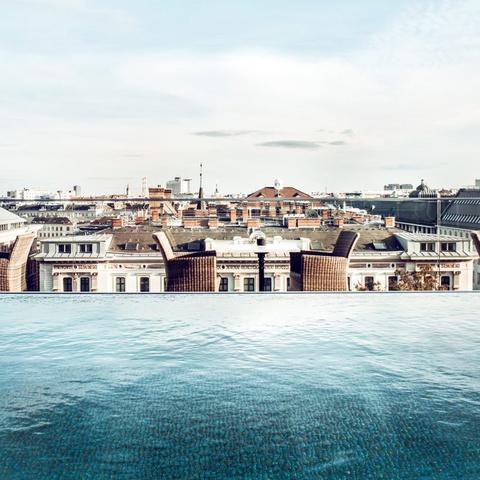
hotel
Vienna, Austria
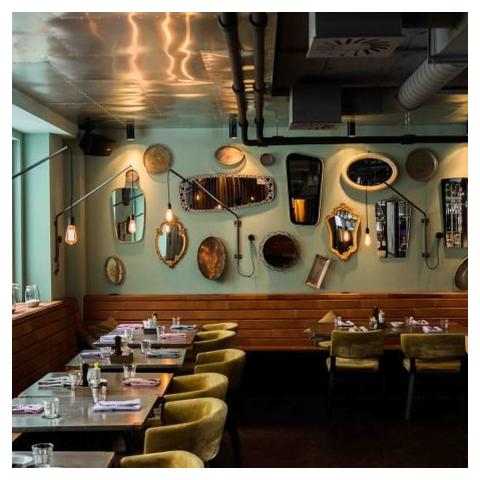
hotel
Vienna, Austria
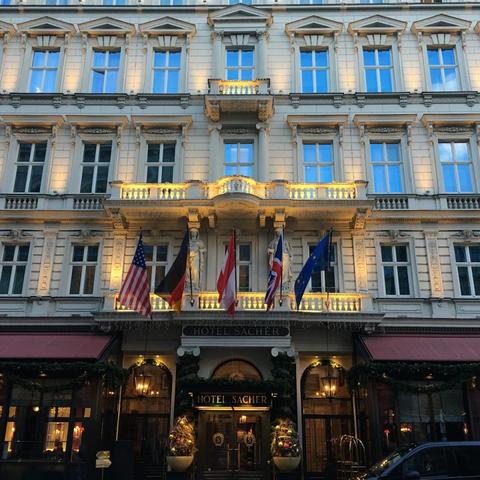
hotel
Vienna, Austria
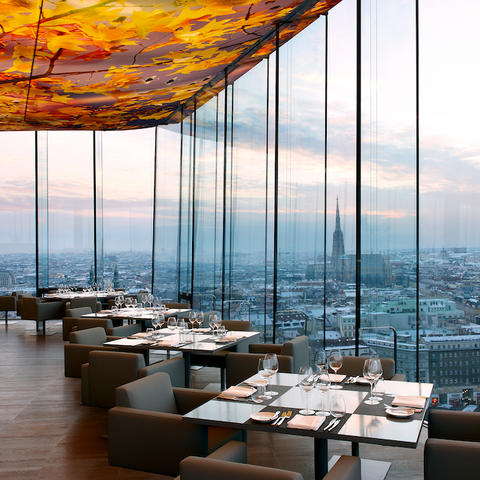
hotel
Vienna, Austria
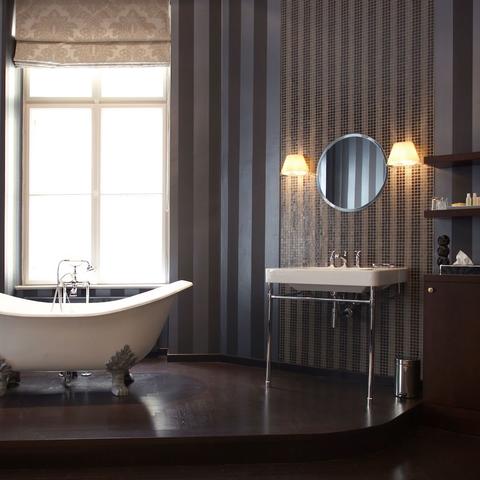
hotel
Vienna, Austria
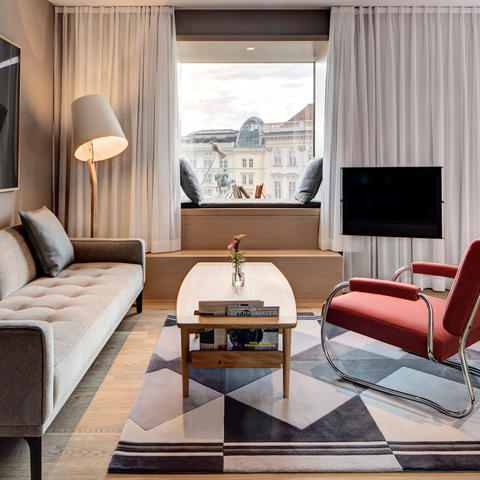
hotel
Vienna, Austria